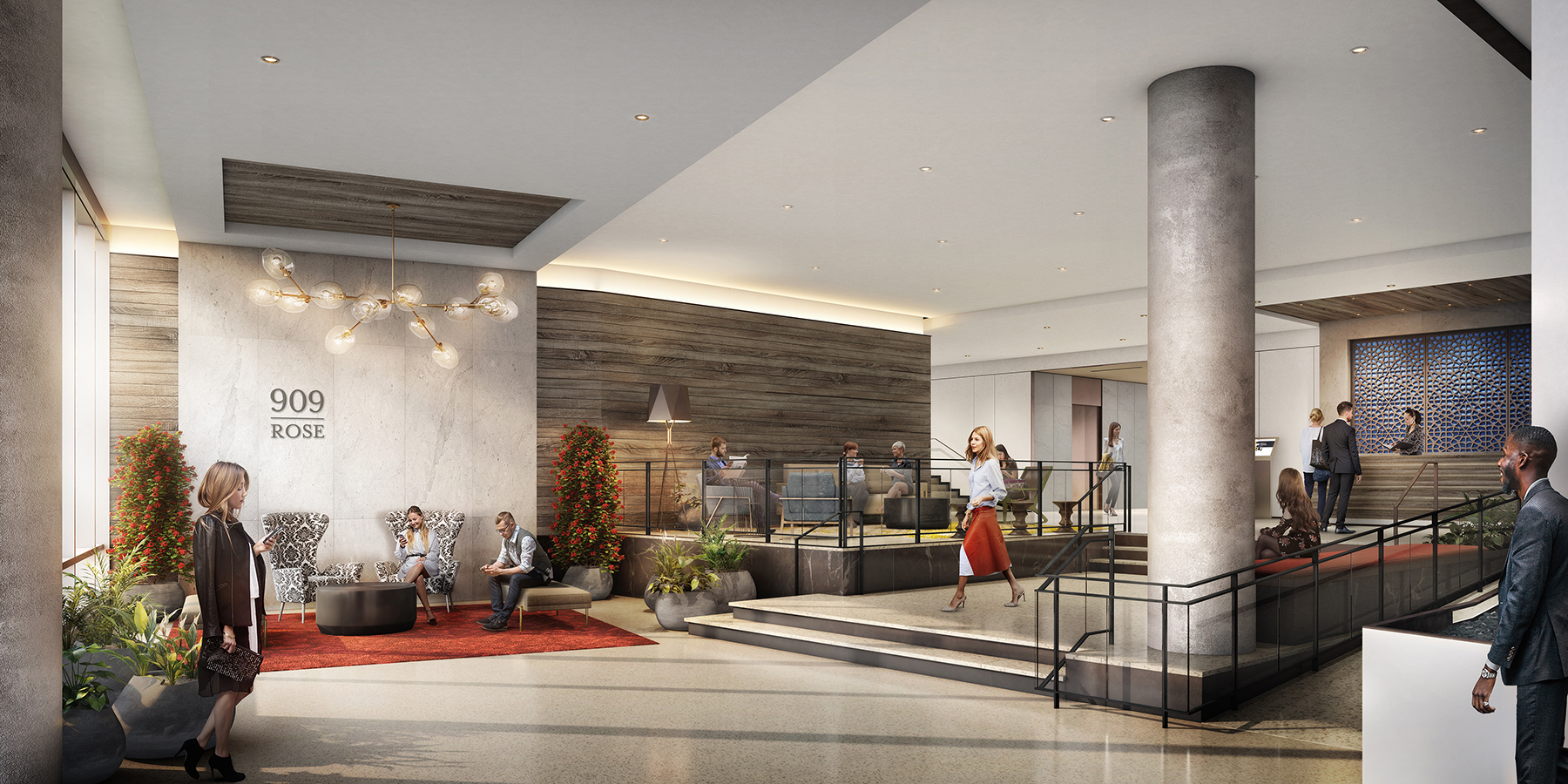Office Occupancy Faces Uncertain Summer
Operators, managers and advisers offer strategies for safety as tenants take their first steps.

Image by StartupStockPhotos via Pixabay
For the office sector, this summer’s main event will be the efforts to return in the wake of COVID-19. For the next few months, however, office occupancy in much of the country is projected to reach only 15 percent to 20 percent, notes Lenny Beaudoin, executive managing director for space enablement services at CBRE, who is overseeing back-to-work issues for the firm. The highly fluid COVID-19 situation is generating considerable uncertainty. Further complicating the issue are evolving state and local policies regarding the return to the office.
“We’re not expecting everyone to come back even if they have the opportunity to come back,” says Beaudoin. On the contrary, he said, “We’re seeing a very fragile return to the office–and that’s both within CBRE and [across] our customer base.”
READ ALSO: Office Reopening Best Practices From NAIOP
A study released last week by Kastle Systems indicates the range of responses to office returning. In 10 major markets, occupancy at office buildings served by the entry management company averaged 22.7 percent. Yet that aggregated figure tells only part of the story; rates vary from 8.0 percent for the New York City market to 36 percent in Dallas.
A robust technology platform with virtual collaboration tools allows CBRE to transact business with customers in a format comparable to conventional in-person meeting rooms. “So we haven’t seen it impair the way that we’re interacting with each other,” Beaudoin said. “I think many organizations have found a surprising amount of resilience in their team’s ability to collaborate remotely.”
Federal guidelines, Beaudoin points out, still recommend telecommuting and to make decisions to come into the office based on individual needs. “We’re expecting that to be very gradual,” he said.
At JLL, the return to the office is essentially an individual decision. “We have been very deliberate in saying to people who could come in [to the office], ‘If you don’t want to for any reason, please don’t come in,’” said John Gates, CEO of Markets for the U.S. and Canada.
Vertically Challenged
While all office property operators are strongly encouraged to follow the extensive guidelines provided by the Centers for Disease Control, populating taller buildings is emerging as a particular concern. “Stairwells and elevators are not conducive to really spreading out and having very limited people when you’ve got a 700,000-square-foot building that’s 50 stories high,” Gates observed.
To that end, Gates recommended to JLL leadership that in highly vertical markets like New York, San Francisco, and Chicago that the company hold off on bringing back employees who can’t walk to the office and must instead take public transportation.
Despite daunting challenges, metrics suggest that tenants have not yet begun a mass exodus from office buildings. In the 34 largest office markets, the volume of office space offered for sublease in May increased a relatively modest 4.3 percent, CBRE reported.
READ ALSO: Construction Slump Likely to Linger
“We had massive job loss in this country, but it’s not been a lot of office or white-collar jobs, so things are actually quite stable, and rent collection hasn’t moved much at all,” Gates reported. In cases where tenants can’t pay rent for a couple of months, landlords are either tacking it on to the back end of the lease or offering two months free rent rather than re-tenanting. “So we’re seeing quite rational discussions happening,” Gates said.

The World Trade Center at night. Image by dbox, courtesy of Silverstein Properties
Meanwhile, owners are deploying both low-tech and high-tech solutions to safeguard their properties. “We’ve developed a road map for each of our buildings that covers everything from cleaning and social distancing protocols, to a suite of brand-new services that will make the transition back easier for everyone,” said Dino Fusco, chief operating officer at Silverstein Properties, whose holdings include several trophy towers at the World Trade Center in Manhattan.
As part of the company’s in-house strategy, the team is now organized into three groups. An office planning software called Dojo ensures that employees maintain safe distances; Backtrack, a contact tracing tool, helps monitor employee health.
Similarly, Fisher Brothers, which owns and manages more than 10 million square feet of Class A office space in New York City, is deploying “hospital-grade air filtration and real-time air quality monitoring that ensures maximum fresh air supply, to contact-free turnstiles and thermal scanning,” said Ken Fisher, a partner at the century-old firm. “We have taken many precautions to make certain that our tenants will feel the presence of our new and existing protocols upon entry.”
Potential Liabilities
The responsibility to safely bring employees back to their workplaces also has legal implications. Wrongful death lawsuits related to coronavirus have already been brought against Walmart and meatpacking plants, and the office sector is likely to face the same scrutiny as it opens up for business.
A worker who was infected ,and believes that the place of employment is to blame for failing to follow CDC guidelines, is likely to bring legal action, argues Tom Bentz, who practices insurance law at Holland & Knight in Washington, D.C. Such lawsuits, he says, will be difficult to prove in court, since it is impossible to know whether the virus was contracted in a common area—the landlord’s domain—or at a desk, which is the tenant’s domain. Bentz cautions operators to be aware of COVID-19 exclusions inserted by carriers into property policies and general liability policies. Another tip: Make certain that new terms and conditions don’t limit the potential for coverage in the future.
On the transaction side, provisions like force majeure and impracticability and impossibility will now become major issues as tenants come to owners for lease deferrals or modifications, or if owners are considering a new tenant, predicts Herman Lipkis, who practices real estate and hospitality law in Holland & Knight’s Fort Lauderdale, Fla., office. “Owners need to be careful how they write these provisions,” he warns, “because it could mean that tenant would be able to cancel and get out pretty quickly and easily, depending on how it’s written.”
Invention and Reinvention
“We’re still in the very early stages of this,” notes James Scott, lead researcher at the Massachusetts Institute of Technology’s Real Estate Innovation Lab, adding that the technologies we’re using to virus-proof work environments are not new.

Federal Realty Trust added touchless technology to 909 Rose, scheduled to open this summer as part of The Offices at Pike & Rose in North Bethesda, Md. Image courtesy of Federal Realty Trust
Experts all agree, however, that sustainability-minded owners with new green buildings have an advantage. Such is the case at with Federal Realty Trust’s 909 Rose, part of The Offices at Pike & Rose in North Bethesda, Md. Federal Realty is taking 80,000 square feet of the 212,000-square-foot building for its headquarters and moving 175 of its employees in August, followed in October by additional occupants. Minor modifications adding touchless technology were made to address entry into the building, which is designed to LEED Gold standards.
“Thankfully we had invested in a destination dispatch elevator system that utilizes something called port technology,” explains Jay Brinson, vice president of development at Federal Realty. An upgrade to the software also dictates how many people can come on to an elevator at the same time and groups people by destination to minimize exposure.
Gates does not see enough of a migration to the suburbs to call it a trend yet but notes that some companies will decide to relocate on the outskirts of big cities for the short term. If this is the natural migration, suburban office, especially located with easy access to freeways and healthy parking ratios like 909 Rose, seem to have a ready-made audience.
Technologies that enable remote work have been embraced in a much shorter time than is typical, as have other technologies currently being deployed to make office environments safer. “We’re going to see a major changed in other procedures, such as HVAC systems, to orchestrate cleaner and healthier airflow into a building,” Scott predicts. “We’re going to see new things invented throughout this period of uncertainty, and it will be from these design innovations that new systematic changes will emerge that we’ll probably use going forward for the rest of time.”
He notes that previous pandemics, such as the global influenza outbreak of 1918, led to revamped design of restrooms, which were once covered in carpet and decorated with curtains and soft furnishings. “Bath tubes, sinks and tiling all changed because you had to create a much more sterile environment,” he said.
As technology allows more workers to telecommute, Beaudoin predicts another systemic change emerging from COVID-19: a higher bar in office space quality. That will translate to more square footage per desk, improved services that make the office experience more attractive than working remotely, and an increase in cleaning and occupancy maintenance costs.







You must be logged in to post a comment.